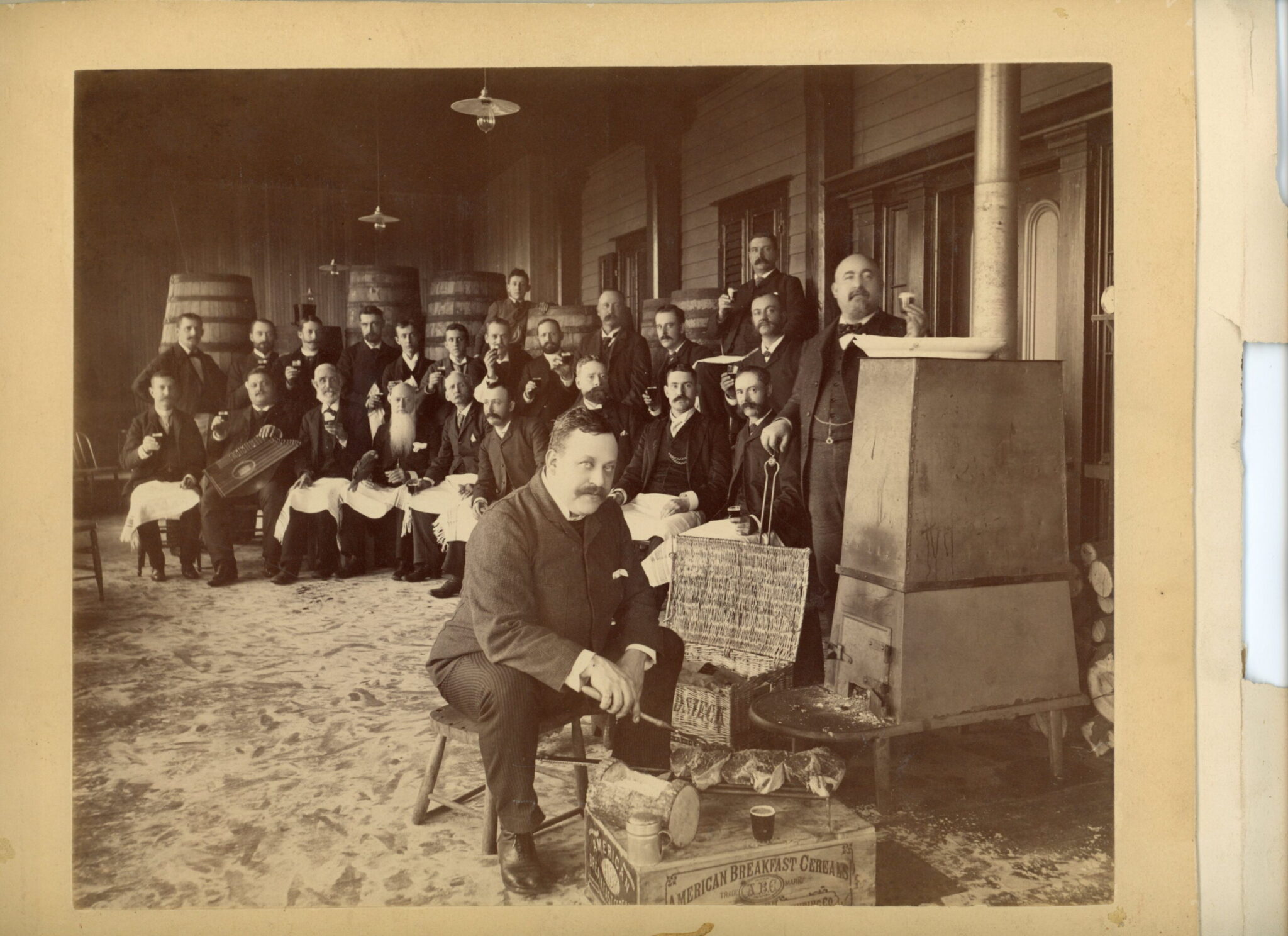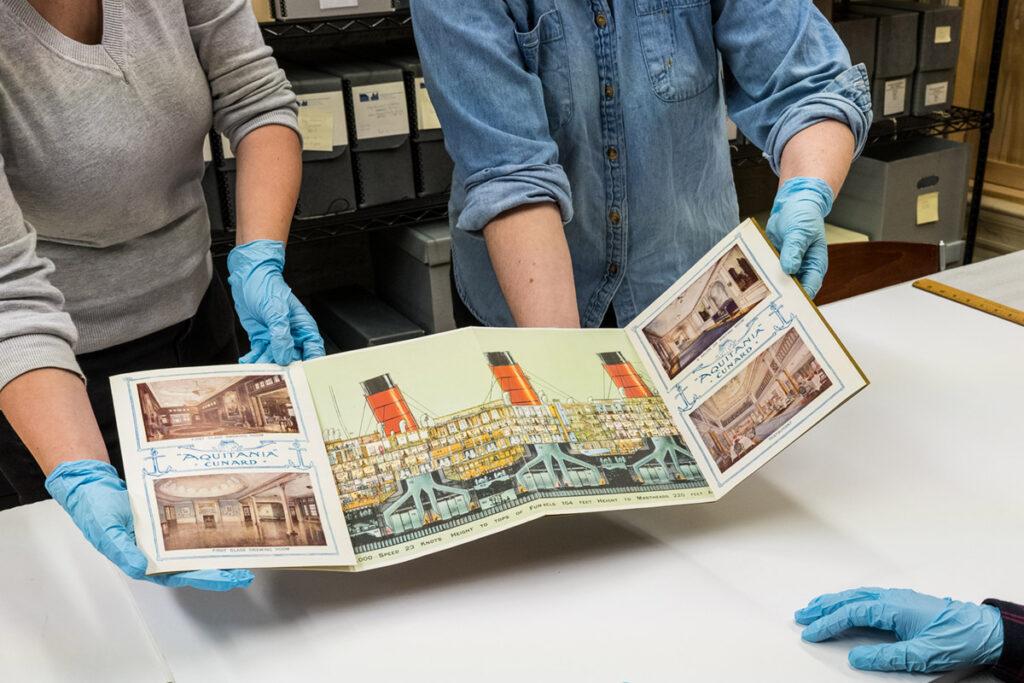A Collections Chronicles Blog
by Sarah Fischer, Collections and Archives Intern
July 2, 2020
Hello! This is Sarah Fischer, Collections and Archives Intern. I started my internship in the Collections and Archives Department in July of 2019, and the first complete project I worked on was processing the Miller Family Beefsteak Dinner Collection. This collection was partly non-accessioned, and what had been accessioned and numbered, was split between three different accession and inventory numbers. The focus of the project was processing approximately 120 archival items that had never been assigned numbers or even been inventoried.
The majority of these objects were correspondence, ranging from the years of 1892 to 1909. The correspondence includes many letters to William S. Miller, a carpenter and builder who hosted many popular Beefsteak dinners in New York City. The authors of these letters were themselves very often fixtures of the late 19th century and early 20th century New York City scene –one of the most interesting aspects of the collection is the letterheads and names on the letters themselves, rather than the content. There were also three objects that did not fall into the category of correspondence – a songsheet, a menu from one Beefsteak dinner, and a newspaper clipping. These were similarly interesting for how they provided context for the tradition of Beefsteak dinners, but also how the collection details a very particular New York City history.
Because of each letter’s unique features, the decision was made to catalog these unprocessed folders at the item level. Each archival item was assigned its own accession number by the Director of Collections. I then scanned the items and uploaded each to an individual entry in the database. Each entry was filled out with a descriptive title, dates (if applicable), an object description, and any other significant subject access points –eminent figures, names of businesses, or geographical locations. Some of the most interesting archival objects are shown below.
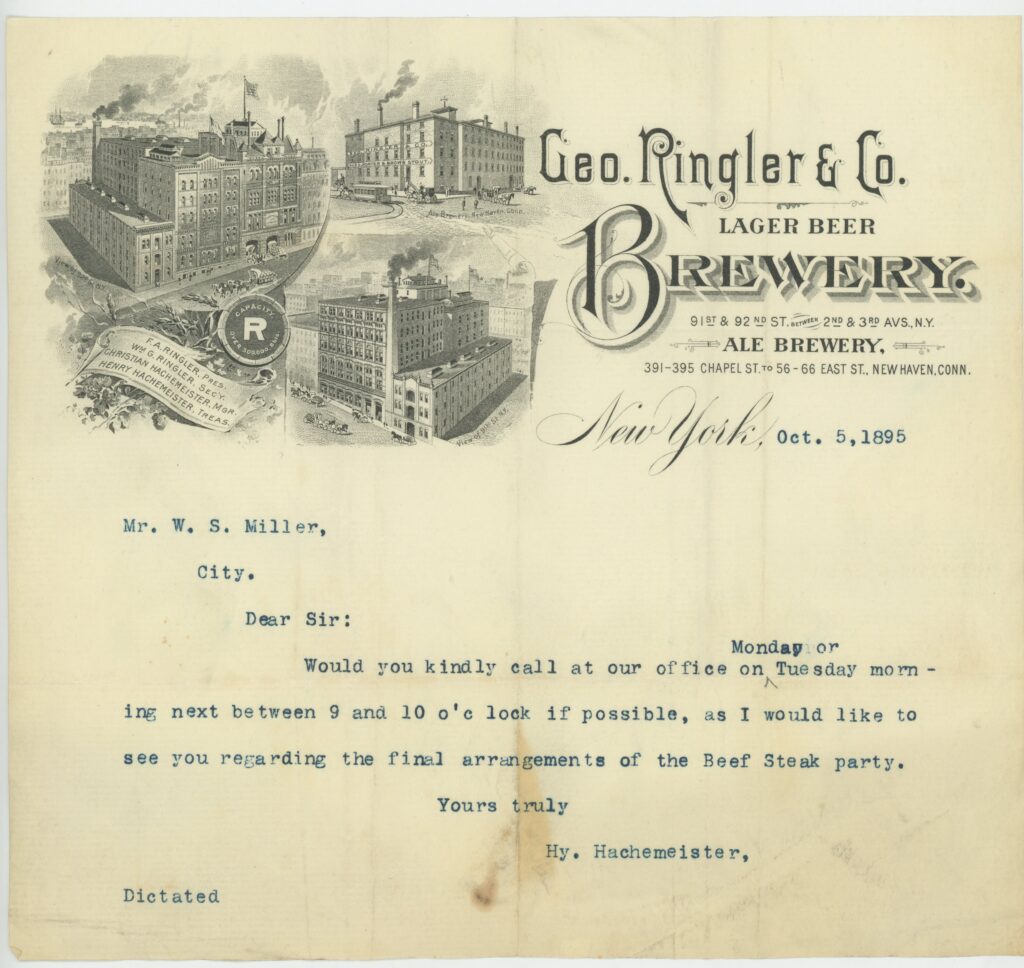
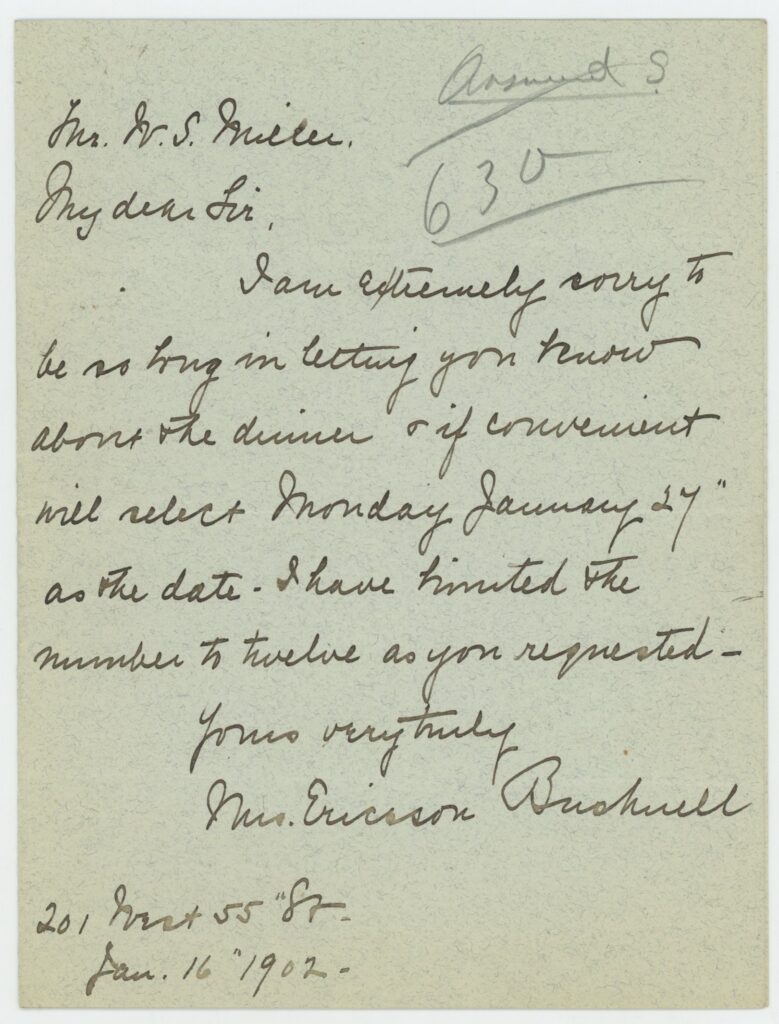
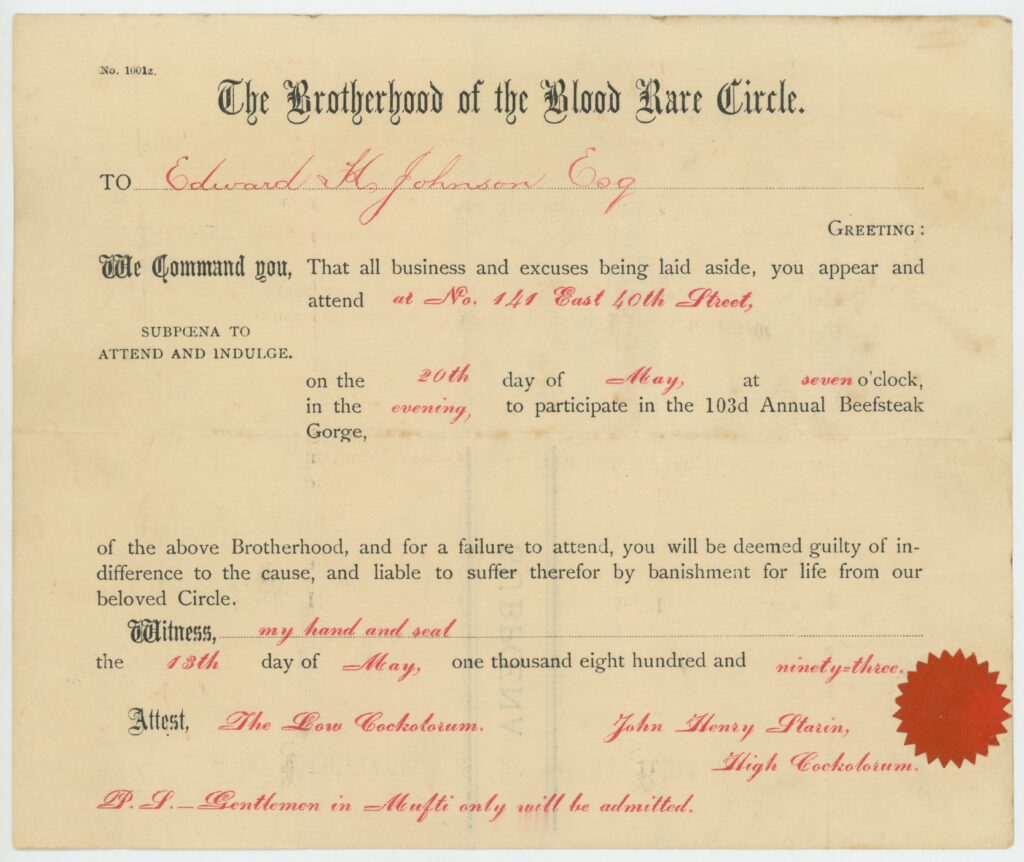
Left: Letter from Henry Hachemeister to William S. Miller, October 5, 1895. 1980.074.0032
Center: Letters from Bertha Bushnell to William S. Miller, January 1902. 1980.074.0082
Right: Invitation to Edward H. Johnson from The Brotherhood of the Blood Rare Circle, May 1893. 1980.074.0019
It was really rewarding to work with this collection from a mostly-unprocessed state to its completion. The collection has now been brought together with the other accessioned objects in three labeled boxes. All three boxes of collection material are newly and safely rehoused, and the finding aid has been updated to reflect the new arrangement comprehensively. You can download it below, in the “Sources” section.
Before processing this collection, I had no knowledge of the clearly rich and extensive (and extremely entertaining) tradition of the Beefsteak dinner. I was especially grateful that my interest in women’s history was taken into consideration before my internship started. This collection gave me the opportunity to study the particular approach of considering the role of women in this male-dominated tradition. I was able to write a social media post highlighting the previously ignored (or perhaps unknown!) level of involvement of women in Beefsteak dinners.
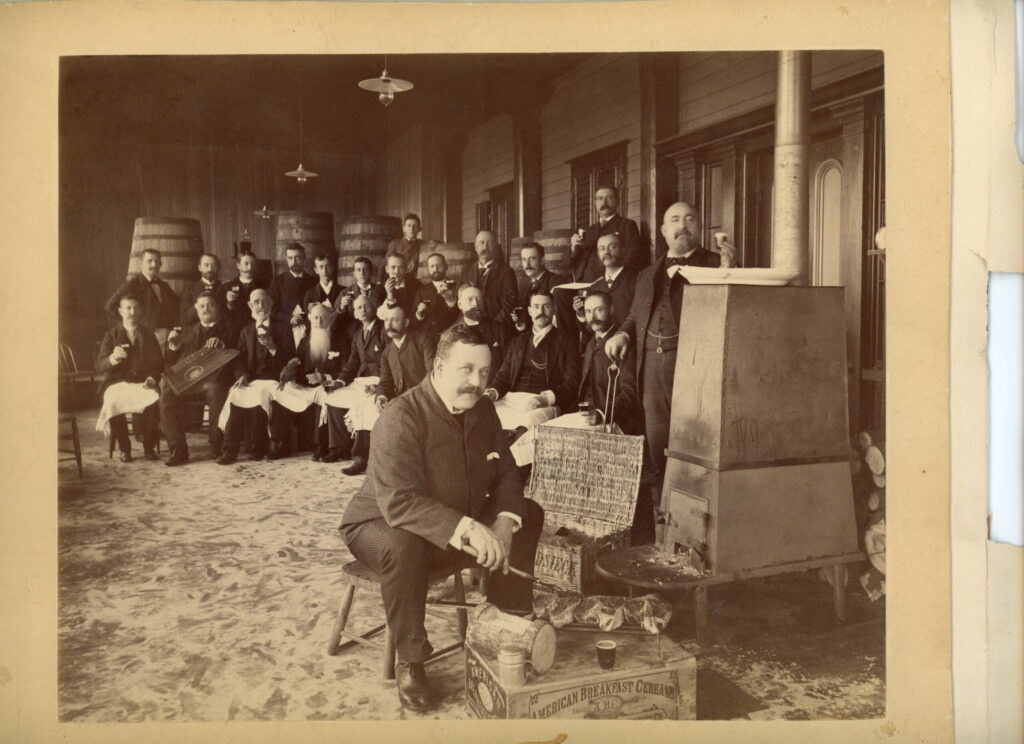
Beefsteak dinners of the late 19th century were traditionally considered all-male affairs, promoting the assumption that “women do not esteem a glutton” — or so journalist Joseph Mitchell wrote in a 1939 New Yorker article, one of the few sources describing the practice. Beefsteak dinners were typically gatherings of working men who came together to consume as much steak and beer as they could. Music was played and social niceties were put aside; rarely did a Beefsteak dinner supply forks, knives, or even napkins.
Mitchell suggests that with the inclusion of women, those defining features of the Beefsteak were corrupted. But some of the many letters in the Museum’s collection, relating to the Beefsteak dinners hosted by William S. Miller challenge this view.
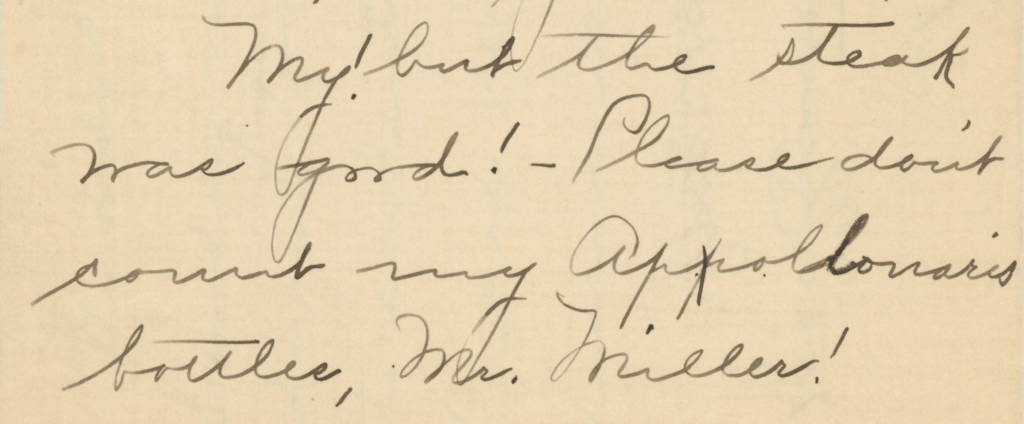
Close-up of “Letter from Marion O. Skeele to William S. Miller,” ca. 1892- ca. 1909. 1980.074.0124
In these letters, ranging from the 1890s to 1909, women are not mentioned as a nuisance, but a natural part of the proceedings. More than a few of the letters are addressed to both Mr. and Mrs. Miller, suggesting that she was as present and involved in the Beefsteaks as he was. That is the case with this letter, from Marion O. Skeele, thanking both Millers for their hospitality. Mrs. Skeele delights in recounting the enjoyment she and Mr. Skeele took in the evening, and as the excerpt proves, there was no shyness in consuming just as much as one’s husband. This particular gender divide was less absolute than it appeared — perhaps women could have their steak, and eat it too!
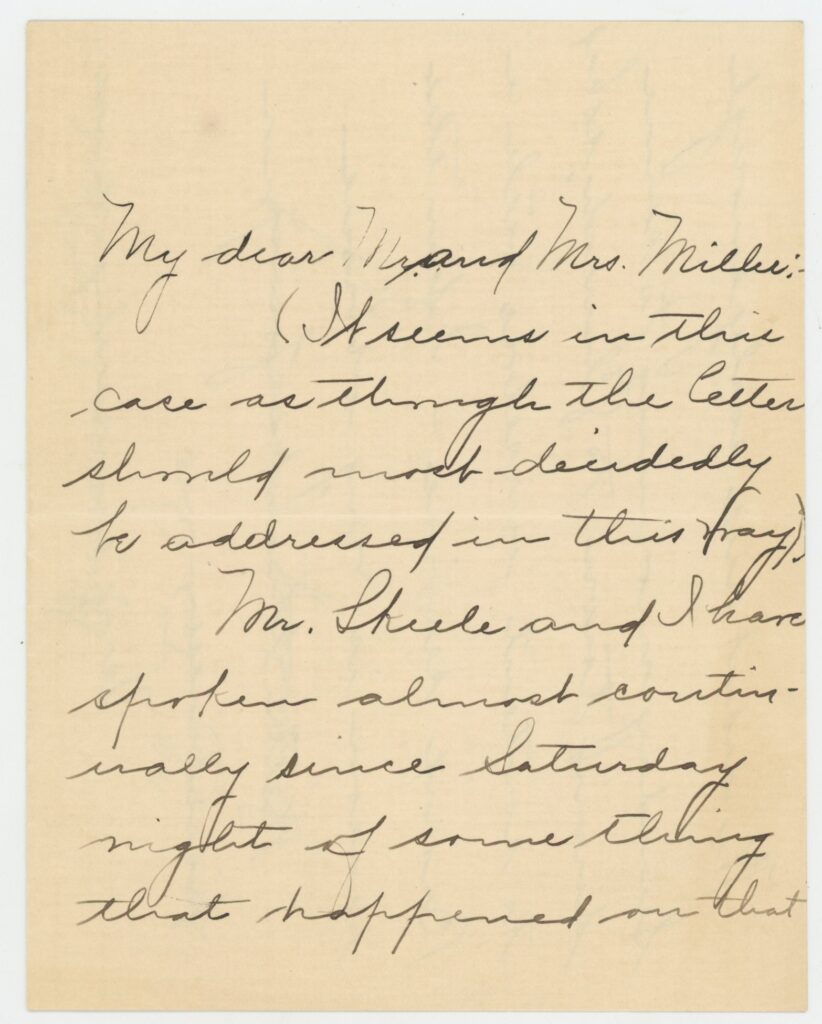
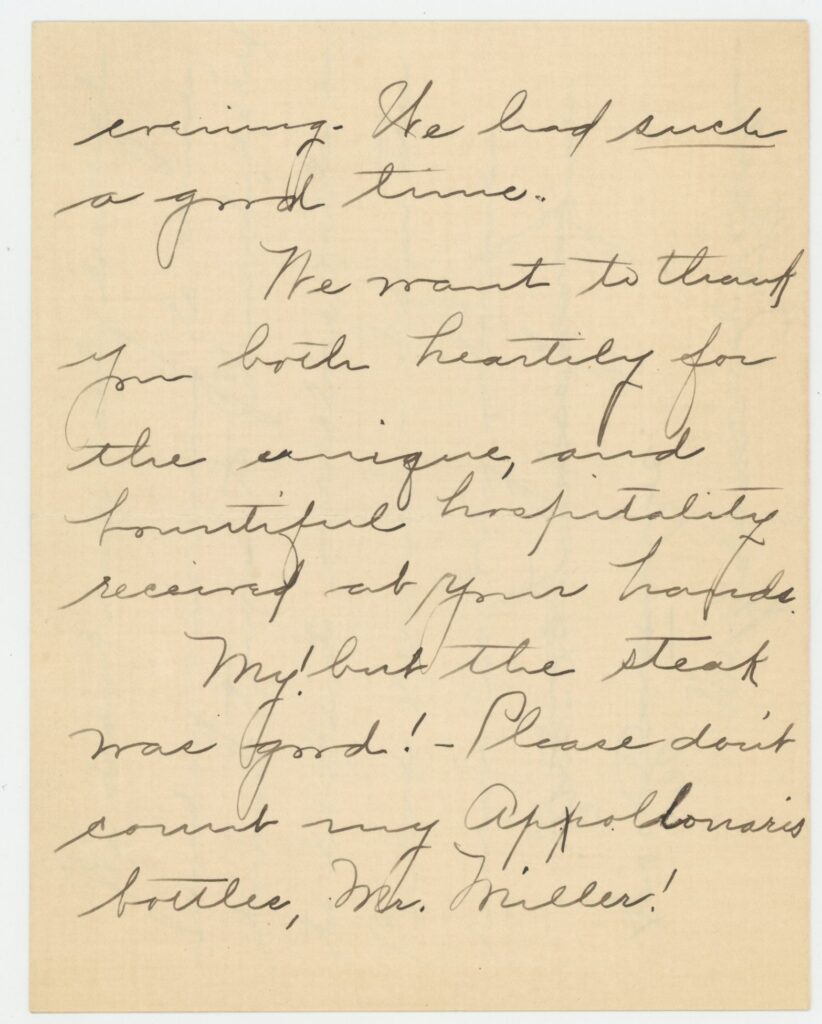
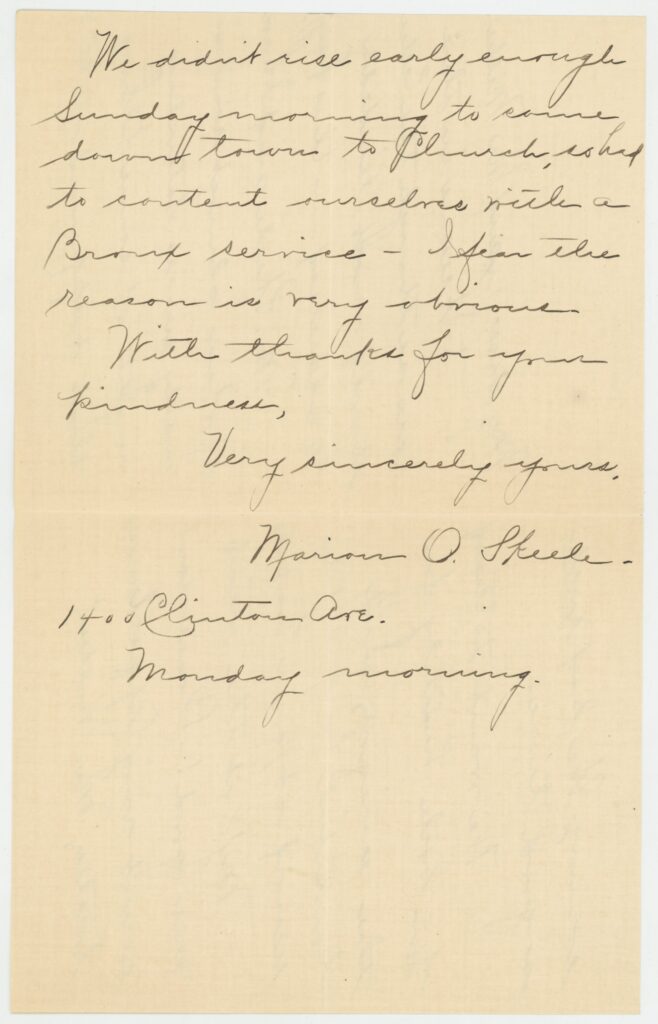
Images: Letter from Marion O. Skeele to William S. Miller, ca. 1892- ca. 1909. 1980.074.0124
Sources:
“The Beefsteak Dinner Craze of the 19th Century” Gothamist, December 11, 2012
“Beefsteak Banquet, A tradition built around beef, beer, and the absence of napkins or forks.” Atlas Obscura
Joseph Mitchell, “All You Can Hold for Five Bucks” The New Yorker, 15 April 1939.
Research Policies
Conducting research is a vital part of the Seaport Museum’s work. The Museum is actively engaged in a complete inventory of its collections and archives. This ongoing project will improve future public access to the materials in our care and ensure that items are documented and preserved for future generations.

